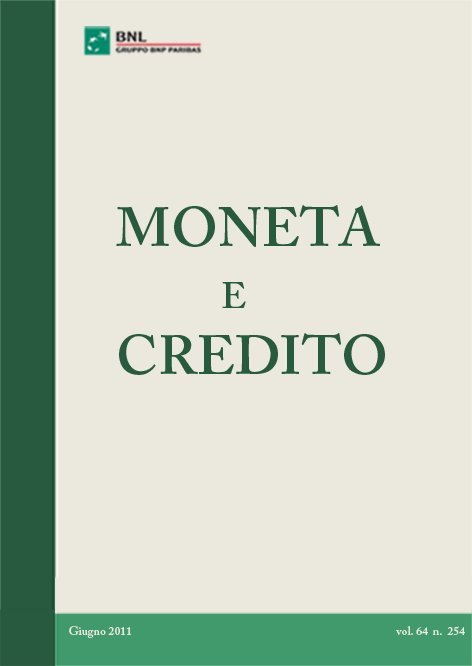Economie in crisi: Eurolandia dalla resistenza alla ricostruzione.(Economies in Crisis: Euroland from Resistance to Reconstruction)
DOI:
https://doi.org/10.13133/2037-3651/9494Parole chiave:
Aggregate debt, eurogovernance, intergovernmental coordinationAbstract
In this article we underline the effects of the crisis that erupted in the U.S. in 2008, due to financial hazard, and then spread everywhere, to assess how the euro zone (EMU) and its countries have acted. We will consider two periods that the EMU has passed through, each characterized by a different attitude towards the crisis: diversified resistance (with more deficits and higher debt, that in many countries was due to bail out banks); unified resistance (intergovernmental coordination, with a common special vehicle (EFSF), ratified by Ecofin and the European Council). We conclude with references to 2011 when the “regulation with actions for growth” might begin.
JEL: E00, E02
Riferimenti bibliografici
COMMISSIONE EUROPEA (2010), Public Finances in EMU, vol. 4, Brussels.
QUADRIO CURZIO A. (2009), "L’Europa e l’Italia economica", Il Mulino, n. 6, novembre-dicembre, pp. 968-976.
QUADRIO CURZIO A. (2010), "The Greek crisis and the European crisis. How to face them", Economia Politica. Journal of Analytical and Institutional Economics, vol. XXVII, n. 1, aprile, pp. 3-8.
QUADRIO CURZIO A. (2010), "La crisi greca spaccherà Eurolandia?", Il Mulino, n. 3, maggio-giugno, pp. 416-424.
QUADRIO CURZIO A. (2011), "A proposito di bond europei", Il Mulino, n. 2, marzo-aprile, pp. 282-290.
##submission.downloads##
Pubblicato
Fascicolo
Sezione
Licenza

Ogni materiale pubblicato sul sito e gli articoli pubblicati sulla rivista sono distribuiti con Licenza internazionale Creative Commons Attribuzione - Non commerciale - Non opere derivate 4.0. Copia della licenza è disponibile alla URL http://creativecommons.org/licenses/by-nc-nd/4.0. Gli autori mantengono i diritti sulla loro opera e cedono alla rivista il diritto di prima pubblicazione dell'opera con la licenza suindicata.


